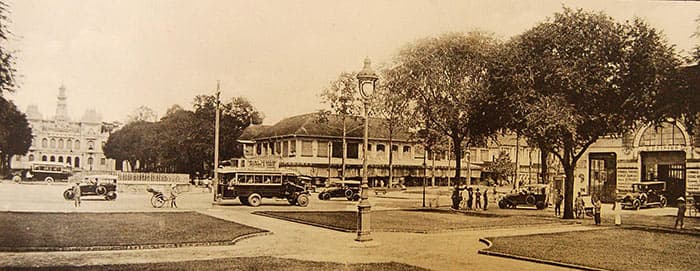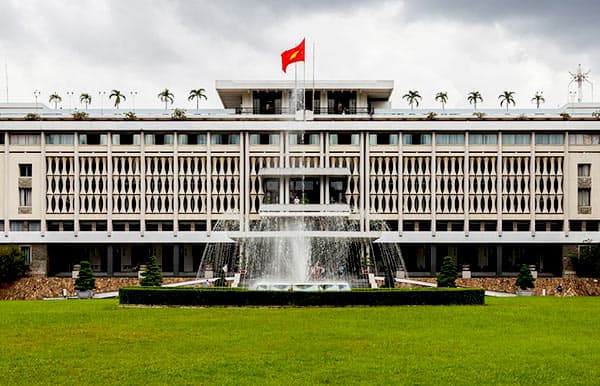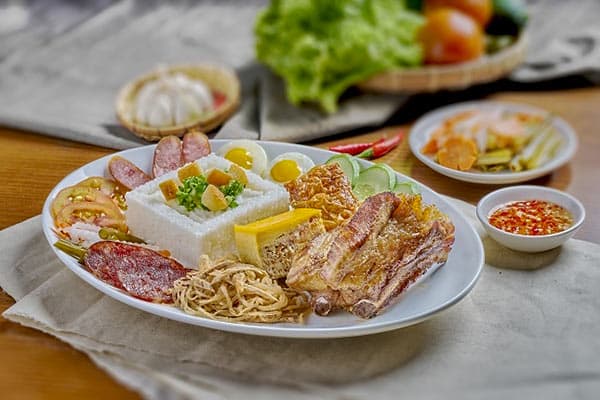SAIGON - SOUTHERN VIETNAM
IMMERSION IN THE ECONOMIC CAPITAL OF VIETNAM
Ho Chi Minh City is Vietnam's largest city and the economic heart of the country, even before the capital Hanoi. The city is located on the banks of the Saigon River, near the Mekong Delta in Southern Vietnam.
Ho Chi Minh City has a reputation as a modern, dynamic, very active and lively city. Formerly called Saigon, in reference to the river, the city is sometimes still called by this name even if officially the word Saigon refers today rather to the centre of Ho Chi Minh City.
History of Ho Chi Minh City
Ho Chi Minh City was once Cambodia's most important port and was populated by the Khmers, Cambodia's main ethnic group. The city was named after Prey Nokor.
The first Vietnamese presence in the city dates back to the early 17th century, with the establishment of a tax station in 1623 by Lord Nguyen. Then, in 1679, an officer of the Nguyen lords established a military post in this region of southern Vietnam. It is this presence that gives the city the name of Saigon.
On February 17, 1859, a Franco-Spanish fleet seized the city under the command of Admiral Charles Rigault de Genouilly. From March 1860 to February 1861, the Vietnamese forces of Emperor Tu Duc besieged Saigon because the city represented a gateway to Cochin China, which gave it a significant strategic importance, in addition to benefiting from important agricultural resources. After one year, the siege failed due to the arrival of reinforcements.
In 1862, the Treaty of Saigon was signed and transferred sovereignty over several parts of Vietnam to France. Emperor Tu Duc then ceded Saigon to the French, as did other cities in the country. The French decided to keep the name Sài Gòn but by francizing it, which gave Saigon.

Saigon in the 19th century
The city's urban planning was then rethought. Saigon is destined to become a city of colonization, with a geometric plan reminiscent of Roman cities. The city was nicknamed the "Little Paris of the Far East" because of its European aspect.
In 1954, at the end of the Indochina War, Saigon became the capital of the Republic of Vietnam (which disappeared in 1975 and was later absorbed by the Communist North to form the Socialist Republic of Vietnam as we know it today).
At the end of the colonial era and after nearly 100 years of French presence, Saigon entered the Vietnam War. It is now the Americans who are on the scene, and the city is becoming the main centre of the American military in Indochina and southern Vietnam.
The victory of the Communist North and the departure of the Americans marked the fall of Saigon in 1975 and the end of the Vietnam War.
It was on July 2, 1976 that the communist victors imposed the current name of the city, Ho Chi Minh City, in tribute to Ho Chi Minh, the founder of the Vietnamese Communist Party.
What to do in Ho Chi Minh City?
Notre-Dame de Saigon Cathedral
This cathedral was built between 1877 and 1880 by the French. It is inspired by the Cathedral of Notre-Dame in Paris and all building materials have been imported from France. The cathedral is located on the Place de la Commune de Paris, not far from Dong Khoi Street, which is the heart of the French Quarter in Ho Chi Minh City.
Saigon Central Post Office
This building houses the city's main post office, built by the French Post Office administration between 1886 and 1891, during French Indochina. The central post office is located opposite Notre-Dame de Saigon Cathedral. The steel structure of the building was designed by Gustave Eiffel. Inside you can find frescoes on the walls, old maps, old telephone booths, counters or a portrait of Ho Chi Minh.
The Reunification Palace
The reunification palace is a very important monument in the city. It was used at the time as an office for the Governor of Cochin China, by the Governor-General of French Indochina but also later as a presidential palace by Ngô Dinh Diêm. Visiting this palace allows you to learn more about the history of the country and the daily life of various leaders.

Reunification Palace
Ben Thanh's market
It is one of the largest markets in the city. All kinds of goods can be found there. Although quite touristic, walking around this market is a very interesting experience because it is very lively and also allows you to taste different Vietnamese specialities.
The War Remains Museum
This 7,300 m² museum houses exhibitions on the Indochina War and the Vietnam War. Its name was once "Gallery of American Atrocities", before being changed to "Gallery of War Crimes" and then to "Museum of the Remains of War", its current name.
It allows you to learn more about the history of Vietnam and not to forget the horrors that are linked to the different wars. Indeed, in this museum the War is not presented in a positive way, quite the contrary.
The museum is composed of two parts: an exterior part with American war vehicles (tanks, planes, guns,...) and an interior part with different parts, objects and photos. The museum houses more than 20,000 of them, some of which are difficult to see. Indeed, by visiting this museum we pass for example in front of a photograph which represents the massacre of My Son in 1968 or pieces which testify to the disastrous consequences of the use of the orange agent (a herbicide) by the Americans: diseases in the military using the herbicide but also in Vietnamese fighters and civilians, birth defects even years after the fighting because of the molecules still present in the environment,...
There are also exhibits testifying to the various forms of torture inflicted on prisoners, as well as newspaper headlines, anti-war propaganda posters and reproductions of the "tiger cages" used in Con Dao prison, nicknamed "hell on earth".
This museum is a must during a stay in Southern vietnam.
The ao dai museum
The ao dai is a traditional Vietnamese dress, worn by a large majority of women at official ceremonies and weddings but also sometimes as a uniform.
This museum dedicated to traditional dress was designed by Sy Hoang, a stylist who wanted to highlight and preserve the ao dai. It was inaugurated in 2014 and is one of the two private museums in Ho Chi Minh City.
Visiting this place allows you to discover the history of the ao dai as well as its evolution from its creation to today. You can also admire the different steps in the design of an ao dai. Different ao dai are on display during the visit depending on the different periods of history, while some belonged to famous Vietnamese women.
In addition, the museum presents literary, musical and cinematographic works in which the Áo dài appears. The museum itself is made of old wood and located in a quiet place, where you can find lotus ponds, "monkey bridges", rivers,...
The Fito Museum (Museum of Traditional Medicine)
The Fito Museum is the other private museum in Ho Chi Minh City. It was built by the pharmaceutical company Fito Pharma. It is more than 2,000 m² and is located in front of the Fito pharma factory 30 minutes from the city centre.
The visit of the museum is made through 14 rooms, each with a different theme. Thus, for example, you will find in the first room about 600 paintings of medicinal plants but also a 100-seat cinema that screens a 25-minute documentary dedicated to traditional medicine in Vietnam, available in Vietnamese, English, French or Russian.
Gastronomy in Ho Chi Minh City
The cuisine in Ho Chi Minh City is extremely varied and offers the opportunity to taste many specialities from Southern vietnam. Here are some examples: com tam (broken rice with grilled pork, fried eggs, vegetables), goi cuon (Vietnamese spring roll with rice paper, shrimps, pork, vermicelli, vegetables), banh mi (Banh Mi from Ho Chi Minh City is known to be lighter than in other regions of the country with a crisper bread, the possible ingredients remain the same all the same, namely meat, eggs, fish, vegetables), banh xeo (a pancake made from rice flour with pork, shrimp, various condiments,...),...

Broken rice (com tam) - Specialty of Saigon
Some tips during your stay in Ho Chi Minh City
- If you go through the Ben Thanh market, be careful with prices because the market is more frequented by tourists than locals and therefore they tend to be higher than elsewhere.
- Street food in Ho Chi Minh City allows visitors to enjoy excellent Vietnamese but also French food.
- If you like lively tourist areas, take a walk along Pham Ngu Lao Street, which is full of restaurants and bars. This neighborhood is even more lively at night!
Ho Chi Minh City is the main and essential destination for a trip to Southern Vietnam. It is full of assets so don't hesitate to make the most of your presence on site.



